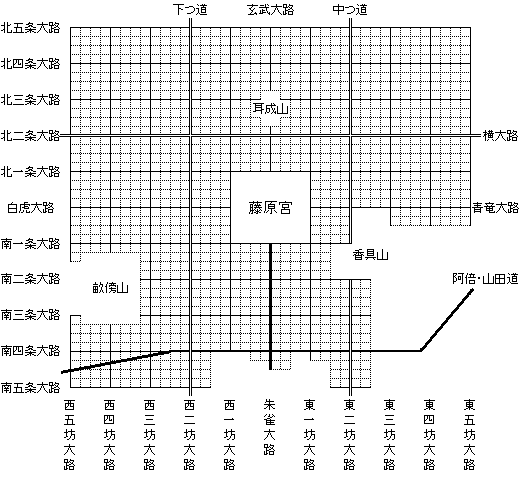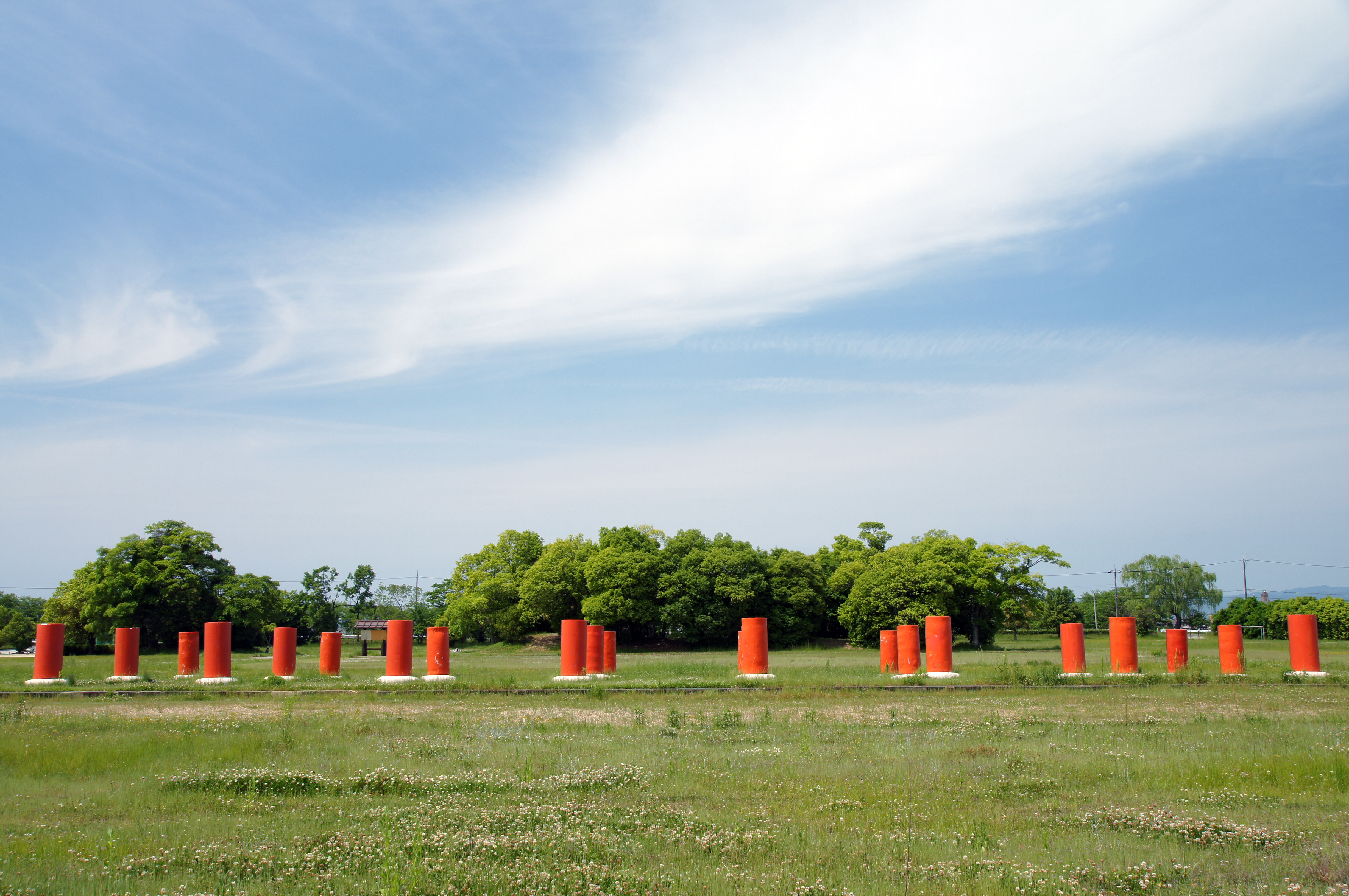Fujiwara-kyō on:
[Wikipedia]
[Google]
[Amazon]


 was the Imperial capital of Japan for sixteen years, between 694 and 710. It was located in Yamato Province (present-day Kashihara in
was the Imperial capital of Japan for sixteen years, between 694 and 710. It was located in Yamato Province (present-day Kashihara in
Exhibition Room of Fujiwara Imperial Site
{{DEFAULTSORT:Fujiwara-kyo 690 establishments Former capitals of Japan Asuka period Planned capitals Special Historic Sites


 was the Imperial capital of Japan for sixteen years, between 694 and 710. It was located in Yamato Province (present-day Kashihara in
was the Imperial capital of Japan for sixteen years, between 694 and 710. It was located in Yamato Province (present-day Kashihara in Nara Prefecture
is a prefecture of Japan located in the Kansai region of Honshu. Nara Prefecture has a population of 1,321,805 and has a geographic area of . Nara Prefecture borders Kyoto Prefecture to the north, Osaka Prefecture to the northwest, Wakaya ...
), having been moved from nearby Asuka. However, the name Fujiwara-kyō was never used in the '' Nihon Shoki''. During those times it was recorded as Aramashi-kyō (新益京).
As of 2006, ongoing excavations have revealed construction on the site of Fujiwara-kyō as early as 682, near the end of the reign of Emperor Tenmu
was the 40th emperor of Japan,Imperial Household Agency (''Kunaichō'') 天武天皇 (40) retrieved 2013-8-22. according to the traditional order of succession. Ponsonby-Fane, Richard. (1959). ''The Imperial House of Japan'', p. 53.
Tenmu's rei ...
. With a brief halt upon Emperor Tenmu's death, construction resumed under Empress Jitō, who officially moved the capital in 694. Fujiwara-kyō remained the capital for the reigns of Emperor Monmu and Empress Genmei, but in 710 the Imperial court moved to the Heijō Palace
was the imperial residence in the Japanese capital city Heijō-kyō (today's Nara), during most of the Nara period. The palace, which served as the imperial residence and the administrative centre of for most of the Nara period from 710 to 794 ...
in Nara
The National Archives and Records Administration (NARA) is an " independent federal agency of the United States government within the executive branch", charged with the preservation and documentation of government and historical records. It ...
, beginning the Nara period
The of the history of Japan covers the years from CE 710 to 794. Empress Genmei established the capital of Heijō-kyō (present-day Nara). Except for a five-year period (740–745), when the capital was briefly moved again, it remained the c ...
.
History
Fujiwara was Japan's first capital built in a grid pattern on the Chinese model (条坊制 ''jōbō-sei''); recent investigation has revealed that the city covered an area of roughly 5 km, much larger than previously thought. The palace occupied a plot measuring about 1 km2, and was surrounded by walls roughly 5 m high. Each of the four walls had three gates;Suzakumon
The was the main gate built in the center of the south end of the imperial palaces in the Japanese ancient capitals of Fujiwara-kyō ( Kashihara), Heijō-kyō (Nara), and later Heian-kyō ( Kyoto). The placement followed the ancient Chinese pal ...
, the main gate, stood at the center of the south wall. The ''Daigokuden'' (大極殿) and other palace buildings were the first palace structures in Japan to have a tile roof in the Chinese style.
The area had previously been the domain of the Nakatomi clan
was a Japanese aristocratic kin group (''uji''). Papinot, Jacques Edmond Joseph. (1906). ''Dictionnaire d’histoire et de géographie du Japon''; Papinot, (2003)"Nakatomi," ''Nobiliare du Japon'', p. 39 retrieved 2013-5-5. The clan claims desce ...
, who oversaw the observation of Shintō rituals and ceremonies on behalf of the Imperial court. The city burnt down in 711, one year after the move to Nara, and was not rebuilt. Archaeological excavations began in 1934, and some portions of the palace were reconstructed. Close to 10,000 wooden tablets, known as '' mokkan'', have been found, inscribed with Chinese characters.
This '' waka'', written by the Empress Jitō, and describing Fujiwara in the summer, is part of the famous poem anthology, the Hyakunin Isshu:
Which translates as '' Spring has passed, it seems, and now summer has arrived; For this, they say, is when robes of pure white are aired on heavenly Mount Kagu.''
Empress Genmei (661–721) moved the capital from Fujiwara-kyō to Nara (then Heijō-kyō) in 710 mainly to carry out the wishes of her son Emperor Monmu (683–707), who was the previous occupant of the throne and had ordered in 697 to search for a new proper capital site. According to Delmer Brown the reason for Monmu to found a new capital may be that he was influenced by the ancient belief that a new Emperor should reign at a new capital and that Nara was intended to be the capical of his son Shōmu.
See also
*Fujiwara clan
was a powerful family of imperial regents in Japan, descending from the Nakatomi clan and, as legend held, through them their ancestral god Ame-no-Koyane. The Fujiwara prospered since the ancient times and dominated the imperial court until th ...
* Yamato Sanzan
References
* Frederic, Louis (2002). "Japan Encyclopedia." Cambridge, Massachusetts: Harvard University Press.External links
*Exhibition Room of Fujiwara Imperial Site
{{DEFAULTSORT:Fujiwara-kyo 690 establishments Former capitals of Japan Asuka period Planned capitals Special Historic Sites